Dark fantasy has never been more popular. We're drawn to the antiheroes with their double standards and their sudden superpowers. We relish the bloody tales where a happy ending is impossible, and where the heads of characters roll unexpectedly. We find pleasure in the immersion into worlds painted in dark colors, as bleak as a polar night, populated by scarred heroes and beauties mounted atop monsters. What then is the mysterious appeal of dark fantasy? And why should you start to love it right now, if you haven't already?
At the heart of dark fantasy is the golden legacy of world artistic culture
If you look closely, you'll find the hallmarks of dark fantasy even in the "Odyssey," one of the cornerstones of Western literature. The timeless story of a warrior who dreams of returning home but encounters endless temptations and impurities along the way has been retold countless times in literary, artistic, and musical masterpieces. There's a certain umami in this story that always captivates and evokes empathy, even if the hero is a complete scoundrel.
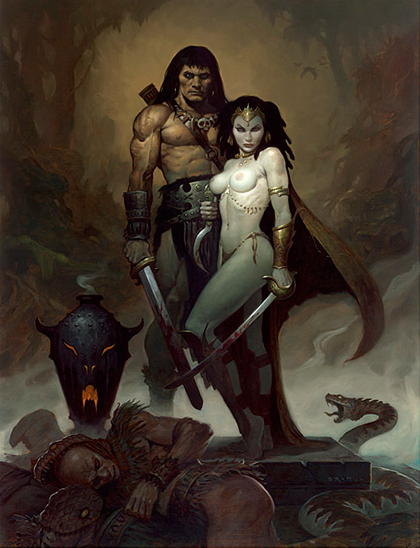
Specialists have traced the elements of dark fantasy in "Beowulf," "Kalevala," "The Divine Comedy" by Dante Alighieri, "The Raven" by Edgar Allan Poe, "Frankenstein" by Mary Shelley, and even in "The Metamorphosis" by Franz Kafka.
Romantic and symbolist artists, of course, didn't use the term "fantasy," but "The Black Paintings" by Goya (the name implies it) or "Demons" by Vrubel evoke a similar atmosphere to dark fantasy. If desired, one can dig deeper, but it is already clear that dark fantasy is not infantile pictures for gamers, but a unique subgenre with a powerful background and its own icons.
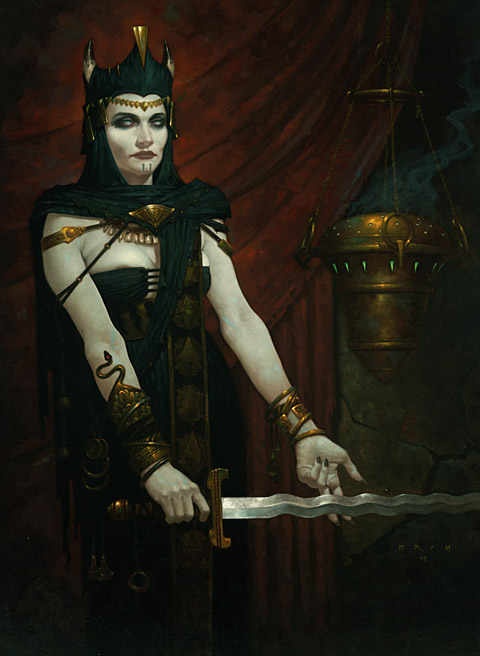
Dark fantasy employs some very cool specialists
Of course, we have to give a special thanks to George R.R. Martin and HBO for their obsession with "Game of Thrones," which has firmly seated us in the world of dark fantasy. But it's not just the "Game of Thrones" series… Among the classic works of dark fantasy, we have to highlight H.P. Lovecraft's "Call of Cthulhu," whose aesthetics continue to inspire horror works like "Silent Hill"; the novel "The Children of Hurin," constructed from the drafts of John Ronald Reuel Tolkien by his son Christopher; Robert Howard's series on Conan the Barbarian; Stephen King's "The Dark Tower"; and Neil Gaiman's comic book "The Sandman," which critics refer to as nothing but "intellectual."
At one time, many authors who worked in the cyberpunk genre turned to fantasy. Some "defectors" don't hide the fact that they are drawn to the sales of dark fantasy. Fantasy has become more relevant because cyberpunk has, in a sense, come true and turned into reality — nobody is afraid of attacking artificial intelligence anymore, but demonic undead are still in demand. "In demand" here is not just a figure of speech: in 2009, one of Frank Frazetta's classic illustrations (creator of Conan and Tarzan) sold for a million dollars at auction.
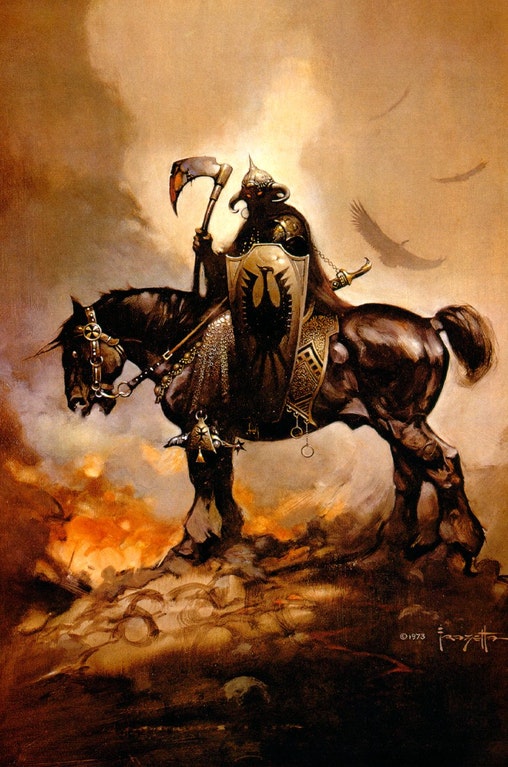
Artists come to dark fantasy art in different ways. For example, Gerald Brom, who created book covers for Michael Moorcock and Edgar Burroughs, assures in his interviews that he drew dark warriors and terrifying monsters since childhood, so meeting with TSR in adulthood became a lucky ticket for him. Imagine that your imagination creates frightening pictures - and you get paid for it!
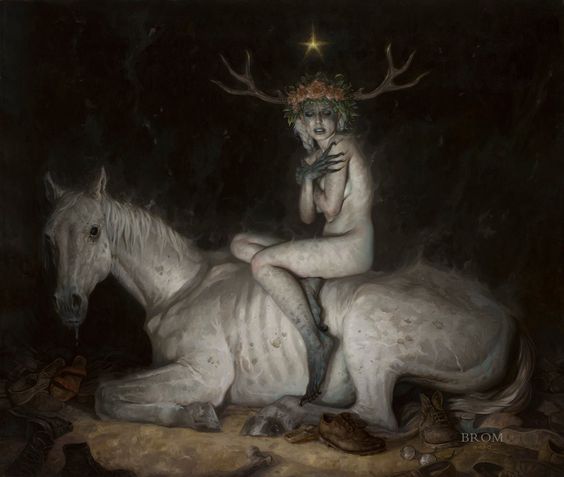
By the way, it's not easy to scare viewers with a static picture. But the best manage to do it. Dark fantasy is an exotic and expressive subgenre. And it completely unleashes the hands, allowing us to turn all the secret corners of the human soul inside out. It's scary, but beautiful to the point of goosebumps.
Dark Fantasy Doesn't Paint an Idealistic Black-and-White World
Here, the bad guys fight against the truly disgusting, and if someone does save a kitten, there's no guarantee that it won't be torn to shreds in the next scene. In short, "everything is as it is with people." Do you need to depict fountains of blood and splattered brains? Please do! In dark fantasy, taboos on naturalistic scenes are lifted, and even a genuine feat will always have a touch of core sweat.
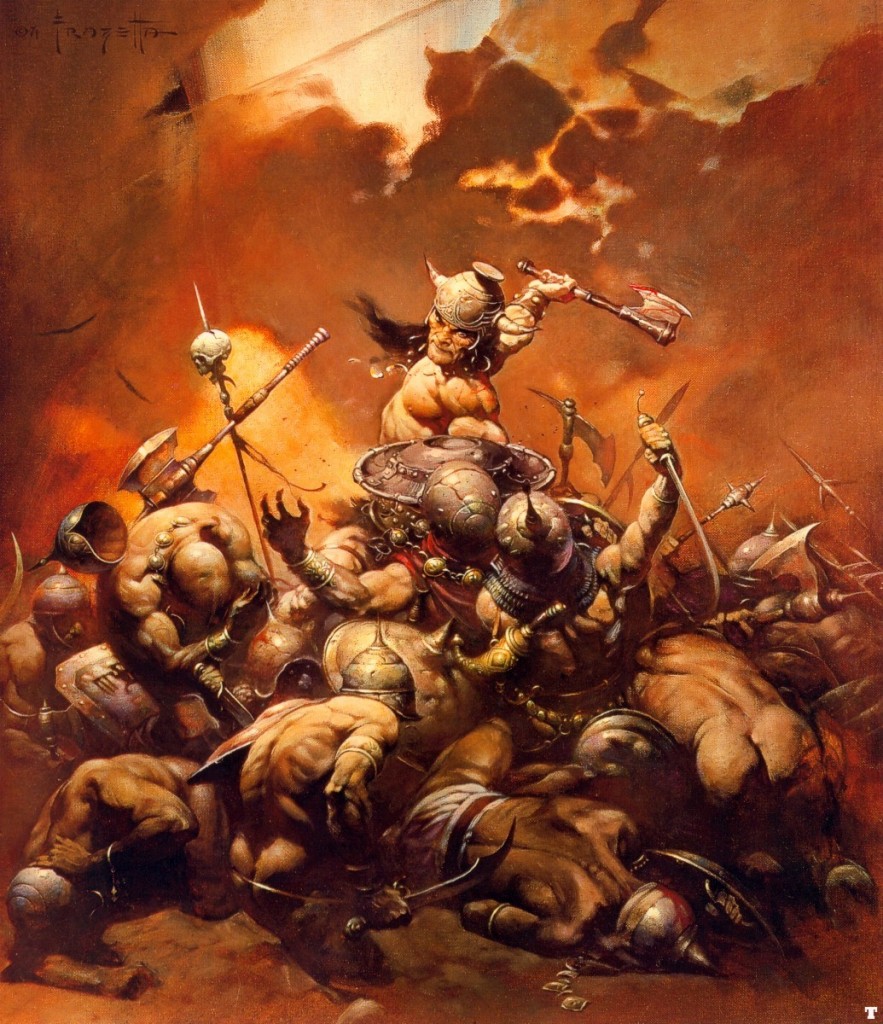
Dark fantasy is a "cozy" harbor for cynics and those who consider themselves realists. In this world of eternal torment and pain, you dream only of it not getting worse, and you are ready to carry on your hands the one who chops off this "worse" right on the doorstep (but without any particular enthusiasm, of course, because joy has no place here). Perhaps the hero is heroic only for money or his own ambitions, but that's precisely why you're more willing to believe him than the holy altruist, who at best is suspicious and at worst slightly foolish.
Let's say the mercenaries from "The Black Company" are not exactly role models, but whether you like it or not, you gradually come to see some good in them. Well, they're just ordinary people: life is such a damn thing that it can be even worse.
It's easier to believe in a dark fairy tale
Of course, no one is looking for documentary sketches in fantasy works - for that, there's our ordinary life with trips to the grocery store and post office. With fantasy, on the contrary, we want to immerse ourselves in a fairy tale, to look into a world modeled by someone caring for us, which may be more or less similar (or maybe completely dissimilar) to the one we inhabit ourselves. But damn, what aesthetic pleasure we get from "watching" the battles of Erikson's heroes in the Malazan Empire or "participating" in the battles of Andrzej Sapkowski's universe! And all because dark fantasy is often very realistic. Even if the character on the picture has hypertrophied abs, he is still anthropomorphic and therefore close in his own way. You easily believe that under those abs are living, warm-blooded muscles.
However, fantasy is fantasy, and even in its darker variant, it possesses all the elements we love about the genre in general: inexplicable occurrences, heroes with magical talents, and characters that include not only humans but also any entities spawned by human imagination, such as vampires, necromancers, demons, witches, and other supernatural beings. It is particularly pleasing that the most vile and despicable creatures are often concentrated within the government of the empire of evil or as close to the court as possible. It just reminds us of something.
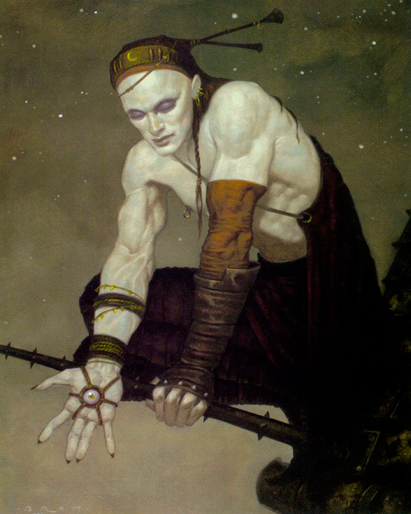
Dark Fantasy is a highly atmospheric genre
Dark fantasy is a highly atmospheric genre where the imagery plays a significant role. With its impenetrable forests, gloomy castles, and long-forgotten cities, the atmosphere of dark fantasy immediately draws in the reader/viewer/player. Goosebumps of suspense are felt from time to time, but dark fantasy is not horror. There is nothing particularly frightening here, everything is already hopeless, so just enjoy the noir immersion and watch as the bad guys dispose of the vile.
Horror elements are present here for ambiance, not as the main focus. To imagine the atmosphere of dark fantasy in vivid colors, one only needs to recall the sensations felt while watching movies like "Van Helsing," "Constantine," "The Brothers Grimm," "Solomon Kane," or "Underworld." The artists working on such films are undoubtedly under pressure: dark fantasy would not be dark fantasy without giving the viewer an incredibly beautiful "picture."
Because of its atmosphere, dark fantasy is best consumed in small doses by those who are easily impressionable. Science fiction writer Lois M. Bujold once quipped that the covers of dark fantasy novels should have a warning label saying, "After reading, open veins." There is definitely some truth to this. In terms of despair and hopelessness, dark fantasy can only be compared to social photography. Therefore, if there is too much sugar in your life, hang posters from the Dark Sun universe in your living room and let them serve as a healing dose of lemon and vinegar.
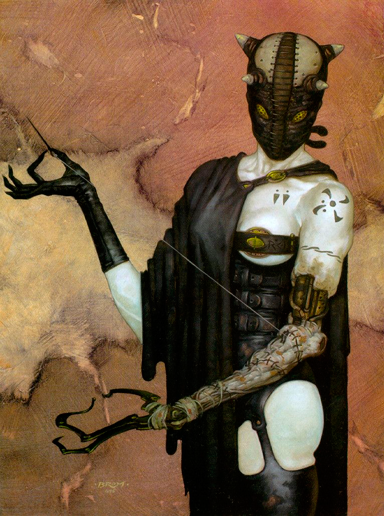
If you need to create something that sends chills down your spine, let me introduce myself: my name is Andrew and I work with great interest in the genre of dark fantasy and more.
This article features illustrations by well-known artists such as Gerald Brom and Frank Frazetta.